An historical snapshot of All Saints
There has been a church on the site of All Saints for at least 1,000 years. The present church dates from 1277. The early history shows that at that time it was in the diocese of Lincoln and there were two places with similar names (Leahton or Leghton). To differentiate, the Dean added the name of his prebend to the town. In this part of the country it was one Theobald de Busar (or Bosat).
Over the years the town has become Leighton Buzzard.
All Saints is a fine example of early English architecture. It dates from the late 13th century, although the font pre-dates the present building - probably from the previous building. The church is built primarily of local sandstone, with limestone “clunch” quoins.
The spire is oolitic limestone and rises to 191ft above the rooftops of the town. It is visible for miles around, especially now it is floodlit at night. The clerestory and angel roofs are its tour de force. Untypical of Bedfordshire but very characteristic of East Anglia, they were added in 1460 by Alice de le Pole, Countess of Suffolk.
The church has inevitably seen change down the centuries: it lost its early stained glass in the Civil War, shards found recently in a south window have been incorporated into a small window in the upper chapel of St Hugh. Musket shot found in the church is on display in the chancel.
For two hundred years or so the church had galleries, first at the west end and later on both the north and south sides too. There were high box pews and an even higher pulpit. These were removed in a major restoration of the church under the direction of Robert Richmond and G F Bodley in the late Victorian period. This returned it nearer to how it must have appeared before the reformation, adding fine windows by C E Kempe.
On 13 April 1985 a huge fire raged through the building wrecking the chancel roof, destroying the organ, bells and seriously damaging the spire and nave roof. There was much collateral damage at ground level. Repair and restoration took place with as much of the old fabric retained as possible.The ancient (11th century) Sanctus bell was saved as was the 13th century lectern.
In 1999 work began on a seven phase programme of further repair, dealing with crumbling stonework, exacerbated by the use of cement, As work progressed, more serious problems came to light, a consequence of old age, weather and the fire.
More than £1.5m has been raised and spent since 2000. It took sixteen years to complete these repairs, but there’s still work to do to keep All Saints looking its best.
History Leaflet 2020
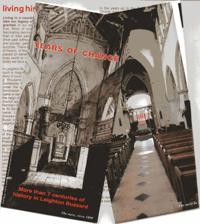 The trust has published a small leaflet with more of the story of All Saints through the centuries. Copies are available in the church or by sending a self addressed envelope to the Trust - details on our CONTACT page. Please ask for the history leaflet. They are free.
The trust has published a small leaflet with more of the story of All Saints through the centuries. Copies are available in the church or by sending a self addressed envelope to the Trust - details on our CONTACT page. Please ask for the history leaflet. They are free.
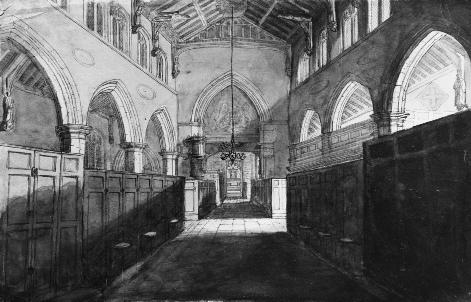
View from west end at the start of the 19th century
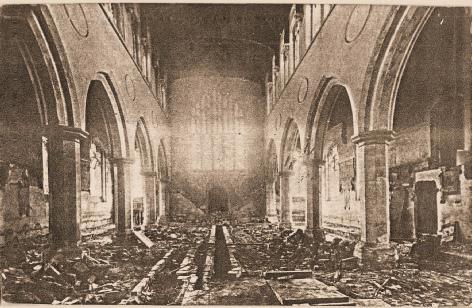
What a difference 100 years make. Above is the scene as Bodley restores the church at the end of the 19th century, returning it nearer to its pre-reformation appearance.
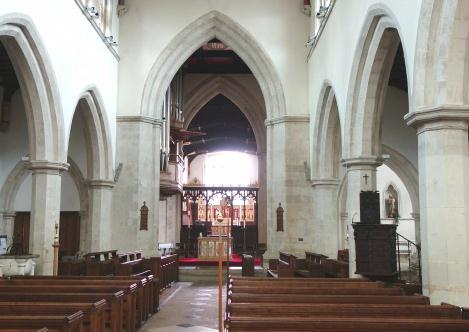
View from the west end in 2018 - what a difference 200+ years make!
Illustrated guide and history
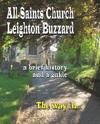 A fully illustrated guide and history of All Saints on sale at £2 (from the church) or +£1.50 p&p from the Trust
A fully illustrated guide and history of All Saints on sale at £2 (from the church) or +£1.50 p&p from the Trust
